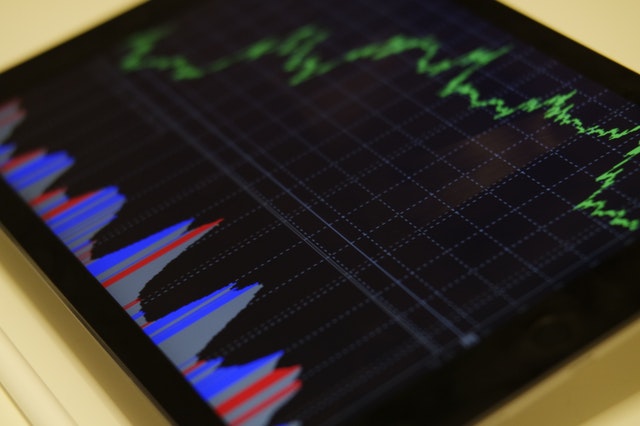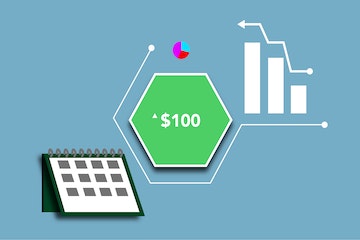Boom & Crash Account WASHED!
Boom & Crash indices are fun pairs to trade especially if you want to grow your trading account significantly over a short period of time. You need to catch a few spikes accurately with a decent lot size and take your day off!
Diclaimer: Trading Futures, Forex, CFDs, and Stocks involves a risk of loss. Please consider carefully if such trading is appropriate for you. Past performance is not indicative of future results. Articles and content on this website are for educational purposes only and do not constitute investment recommendations or advice.
Since every big reward has a big risk attached to it, the Boom & Crash indices are no different and a lot of Boom & Crash traders blow up their real accounts. Some use a poor risk-reward ratio, some awful lot sizes, and some simply get hunted by stop-loss hunters.
Why do a lot of Boom and Crash traders wash their trading accounts? What is the recipe to do good in the Boom & Crash market? In this article, I will answer these and a lot of other related mistakes that lead to blowing up trading accounts.
Why Do Boom & Crash Traders Blow Up Their Accounts?
Boom & Crash traders simply blow up their accounts by underestimating the power of discipline and money management. Specifically, minor mistakes such as using full margin, removing or extending stop-loss, revenge trading, etc… are the main reasons that can wash a Boom & Crash trading account no matter how big your equity is.
Trading is no different than any other business and it requires a good understanding of the market, mastering the art of technical analysis, controlling your emotions, accepting the reality whether you like it or not, and a lot more to become a consistently profitable trader in the long run.
Being part of different trading communities, I hear most of the folks talking about the Boom & Crash as if these indices are comparatively easy to trade than other forex pairs. Despite not having any fundamentals, these indices are way more volatile than any other pairs that you may have traded before. Here is why:
- On a normal day, you can expect 300-500 pips movement in the Boom & Crash indices and holding one wrong trade can result in severe reduction in your equity.
- Another reason is the spike itself. If you are someone who trade against the spikes just to catch some 5 pips, a single series of spikes is enough to take back 5 times more!
That being said, it is extremely important to learn each & everything before you go and try your luck in the Boom & Crash market. To learn the right way to trade the Boom & Crash, let me first explain the wrong approaches that lead to blowing up an account.

1. Poor Lot Size Selection
Neither a big nor a small lot size is a poor lot size. A poor lot size is the one that does not suit your equity and risk-reward ratio. For example, if you have a $100 Boom & Crash account and you use 1 lot size, that would mean for every 1 pip opposite movement, you lose $1, and let’s say you are stopped at 20 pips, that is $20. (20% of your entire equity in a single trade!)
It will take only 4 more failures to kick you out completely from the market. Never do that.
Trade with an equity-friendly lot size. Well, there are no hard & fast rules for that but for accounts below $100, don’t use more than 0.20 lot size and try to slowly & gradually grow your account. Once you see the blues coming your way, you can start using 0.2+ lot size.
You should also consider the winning chances of the trade while selecting a lot size. If you see a strong evidence in the price, there is no harm to go big keeping a tight stop-loss. Here is my article on Boom & Crash trading strategies that explains when to go BIG.
2. Risk-Reward Ratio
Do you place a trade and decide afterward whether the trade was worth taking? If you do, you are doing it completely wrong. Before you place a trade in the Boom & Crash, take your time and analyze the trend and different timeframes. Decide what % of your equity would you risk and how much do you expect from the trade.
If a trade requires you to risk more than the reward, it is simply not worth it. Again, there are no hard fast rules but you should always go for higher rewards.
A risk-reward ratio of 1-2+ is ideal which means that for every $1 you risk, your reward (take-profit) should be at least $2. It will help you grow your account in the long run and this way, you will avoid losing too much in a single trade.
3. Playing Rough With Stop-Loss
This one inherently lies in beginner traders and has, at some point, served as a nightmare for most of the traders out there (including me).
Playing rough with stop-loss means that you either remove stop-loss to avoid the $10 loss (that ultimately blows your $100 account) or place it a bit farther because you think you have found some new evidence. DELETE this concept! It never works (at least, never worked for me).
Whenever you place an order, decide where you want to keep your stop-loss. Whether you keep it according to your equity, trading style, or strategy, there shouldn’t be any second thought once you place it. If you want to learn about placing a perfect stop-loss, I recommend you read this article on Avoiding Stop-Loss Hunting.
4. Not Making Charts
It happens most in the Boom & Crash market. When traders catch a few spikes using a certain “strategy”, it makes them overconfident about the strategy, and they stop relying on charts. Trading is an art and one can never become a good trader if he isn’t a good chartist.
Of course, you can follow others’ charts and avoid the heck of charting but every trader has his own psyche and understanding of the market, and following something that you are not sure about can cost you a fat share of your equity!
Not analyzing the market in full potential before taking a trade is one of the primary reasons why most Boom & Crash traders get their accounts washed.
5. Trading With Minimum Equity
Since the minimum equity requirement of Deriv is $10, most Boom & Crash traders start with lower equity to avoid losing a lot of money. The reality is that while you may win at times but considering the volatility and stop-loss hunting, you will most likely blow your Boom & Crash account by trading with equity lower than $500.
Do not simply trade the Boom & Crash pairs if your equity is lower than $500. Instead, trade other humble pairs like step-index and volatility 25 with minimum lot size. Once you grow your account to the recommended minimum, it’s about time you catch spikes!
So, How Not to Blow Up my Boom & Crash Account?
To give you a one-liner; Trade with discipline. Here is what it means…
If you want to become a consistently profitable Boom & Crash trader without blowing up your account, you must adopt a disciplined trading approach. A disciplined trader is one who believes in reality instead of assumptions that are based on emotions.
Before you place your trade, make sure you have your own chart or a chart that you fully understand, and you are clear about your entry point, stop-loss, and take-profit levels. In addition, you should use an equity-friendly lot size and a decent risk-reward ratio. If you follow these codes, there is no reason you won’t become a consistent and profitable trader in the long run. Simple as that!
Final Words
Many Boom & Crash traders blow up their accounts mainly due to using a poor risk-reward ratio, extending or removing stop-loss, not analyzing the market or not having a chart of their own, using bigger lot sizes, and trading with minimum equity.
In essence, traders who are new to the Boom & Crash market make these mistakes and end up blowing up their accounts just to learn it the hard way.
The Boom & Crash indices are no different than normal forex pairs and the only TWO differences that I can come up with are lack of fundamentals and its synthetic nature. Synthetic means they are computer-generated numbers and are not backed by any organization, country, or individual.
Therefore, do not kid around these indices they are extremely volatile and can give you nightmares worse than any forex pair that you can come up with. Best of luck for your next trading session and if you need any help with Boom & Crash trading, you can refer to our articles and youtube videos.

1 comment
What’s the setting on ichimoku?